Source: CCTV.com
08-02-2006 16:34
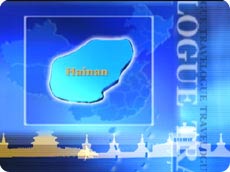
Hainan province is located in the very south of China. As an island, it is surrounded by china south sea. In the history, Hainan had been an unconnected island that served as a singular place receiving rebellions that punished by central government. Amount that there are many revolutionaries and culture uprisings.
Haikou city is the capital of Hainan Island. Lately it has been developed in a large scale of tourism business, the Wild Animal Zoon is one of its successful project that attracts many tourists from all over China. It is only about 45 minutes away from downtown and shuttle buses are available daily.
The Wild Animal Park provides visitors an up close to personal opportunity to come into contact with certain species. Look at this one, it has horse head, donkey’s ears, and Legs. Sightseers can also share the food with the one you like.

Drive a fragile SUV into the wild animal area without any protection is a somehow strange but exciting moment. To share a mutual space with the wild China Northern Tigers, uncultivated African lions and more than 10 bristly black bears wondering around are not a common ride in the regular city zoon.
The Park cautiously alert all visitors are careful when you are in the hazardous area. The animals are very temperamental when vehicles are passing by.
To be honest, I don’t really like to be chased by a hungry tiger. If in case I accidentally end up in the situation, excuse me for my rough outfit.
Fishing is the main business in Hainan Island for native residents. There are still some villages around the city that provide one-day traditional fishing tour. I arrived a small town, they arranged a boat out to the ocean for me to practice fishing with local fisherman. My friend Yan Ling went to the eastbound must envy my hammock very much at this moment.
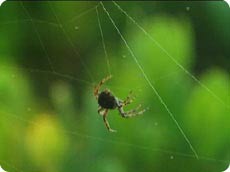
Volcano ruin Park is only one of its kinds. As the experts said: Definitions of "volcano" range from individual vents, measured in meters, through volcanic edifices measured in kilometers or tens of kilometers, to volcanic fields measured in hundreds of kilometers.
The arrival of volcanic products at the Earth's surface is termed an eruption. Some definitions of the word include purely gaseous expulsions, but researchers confine the term to events that involve explosive ejections of fragmental material, the effusion of liquid lava, or both.
This fragmental material may be old as well as new; the explosive interaction of volcanically generated heat and near-surface water can cause dramatic eruptions without any fresh volcanic material reaching the surface.
On looking down from the top, volcano ruin is a big mystery spot on the top of the hill. It is calm and relaxing that provide so much energy to the surroundings. All plans in the park are vigorous blossom.
A network designed to monitor volcanic activities at northeast China's Changbai Mountains is now in operation. There are nearly 30 volcano groups and some 1,000 volcanoes in China, mainly located in the north and northeast, Experts have warned volcanoes at Changbai Mountains are the most potentially dangerous ones in the world.
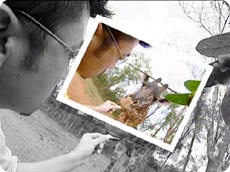
The most exciting trip during this journey is visiting the Jian Feng Mountain. Driving in the tropical forest is an enjoyment and unique experience.
The Forest Ecology institute studies the structure, growth and function of forest ecosystems, particularly the canopy portion of deciduous forests. They study the exchange of energy and materials between the canopy and the atmosphere, the ecology of canopy organisms, and the physiological behavior of canopy surfaces. They hypothesize that the structure of the canopy influences the way forests work and they try to clarify the rules relating canopy structure and function.
Most of the research is centered in a tall, mixed species forest on the Jian Feng property, where they focus on study the microclimate conditions within the forest as well as the transfer of radiation, heat, water vapor and carbon dioxide to and from the atmosphere. They also study these relations in other forests, including different developmental stages of the core forest type, and forests in other climates. With the understanding gained from these studies we hope one day they can make general predictions about how forests function to control microclimate and water balance, accumulate carbon dioxide, and provide habitat for organisms.

Forests are important for their influence on climate at different spatial scales. Those scales range from the vicinity of leaves and interior places of the forest (the microclimate), to larger regions having open and forested lands (often called mesoclimate), and ultimately, to the level of the entire planet (global climate). Canopies are important sites for the uptake of carbon dioxide (through photosynthesis) from the atmosphere and the release of water vapor (through transpiration) to the atmosphere.
Few places on the earth have not been affected by the influence of humans. The degree of that influence varies a great deal from place to place, but in the mid-Atlantic region it has a long history. This area was changed many thousands of years ago by Natives.
Those centuries of human occupation have produced a complicated mosaic of patches that derive from multiple and sequential modifications of the land, with complex ecological, historical, and economic interconnections between the patches. Because our environment is organized in complex ways, having humans as an integral part, changing even as it is observed, it is not convenient to study, difficult to understand causality, and hard to make controlled experiments.
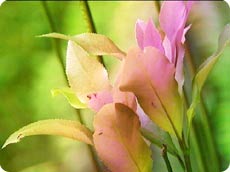
After a whole day exploring experience walking and climbing in the tropical rainforest, I finally found a comfortable area for camping out over the night. To tell you the truth, everyone out there should try it one time in your travel planning if you have not experienced it yet. Personally I quite enjoy it.
Here are a few things that I summarized during this trip for traveling in the wood. A temperate forest is a layered home - you need to look up, down, and all around to see the residents! Look, listen, and take a biological inventory of forest plants and animals.
Do forest organisms shut down, stick it out, take off, or snooze to deal with cold winters? Use some cool tools to observe and record seasonal changes and the process of growth in the forest. How can maps help us identify forest change? Compare scatter graph data to examine the impact of a non-native, invasive insect, and the hemlock woolly adelgid, on a population of eastern hemlocks.
Li village is a must go place for all visitors. I discovered so much just for walk through the region and talk to the habitants. The distinguished facts are: Li worship caw head in generations since the animal has been always contributed so much to the community; Li people do respect all lives in their surroundings such as trees, ivy plans, snakes even the water. As a result, the environment is well preserved and kept back. “Liao Fang” is a special setting in Li’s mentality that shows another kind of respect towards young generation. It is rare and exclusive in China.
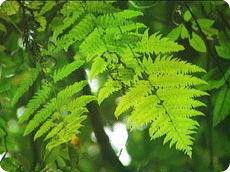
As a tradition, Li women hand made their cloth with bamboo and tree branch. The unique design is becoming popular garment decoration for current market. A simple hand made scarf will take about 2 to 3 months to complete. In the past, Li woman also tattoo their face and body with a secret pattern that keep away from kidnappers for marriage deals.
Nowadays in China there are so many modern architecture designs throughout the cities, most of them are stylish and elegant. However, this Li village traditional house called boat house could be a new model for ocean view resort. The boathouse was created for practical use. It is actually a boat being turned over.
The tropical fruit street is a hot spot in the Li village. Fruit has been used in various purposes in Chinese history. For instance, there are many Chinese herb packages have fruit or fruit skin in it. Tropical fruit contents most vitamins and taste delicious as well.
With oceans covering more than 70% of the earth's surface, it is ironic that usable water is not an abundant commodity. Less than 1% of water on the planet comes in the exploitable form of lakes, streams and groundwater. The potential of saltwater has been contemplated for years, but only recently have there been advances in operations that utilize this abundant resource.
Yinge ocean salt plan is one of the largest salt process plans in China. It occupies thousands of Acers of lands that produce more than 300,000 tones of salt yearly.
Editor:Chen
